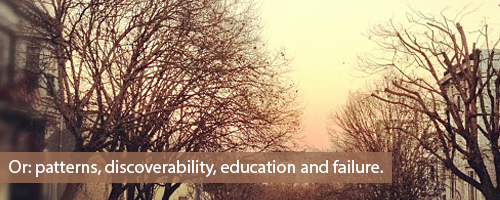Curiosity & Learning
A few days back my friend Cap wrote a great post about curiosity. In that post he postulated that curiosity is a must for (I assume) creative professionals, but, as I’m sure he’d agree, it applies to anyone.
In this I agree with him 100%. I had, coincidentally, been writing a similar post about Kickstarter and how much it inspires me. (And how much it drains my wallet.) My (as-of-yet not entirely formed) point was that we need things like Kickstarter to encourage and help those folks out there who are taking risks. By supporting ideas, even wacky ideas like some of what you’d see on Kickstarter, we allow for us to be inspired, educated and entertained, even if some of those endeavors don’t come out the other end as planned. As well, too many people are content with letting life pass them by. Those of us working in tech often forget that we’re not representative of the masses when it...




